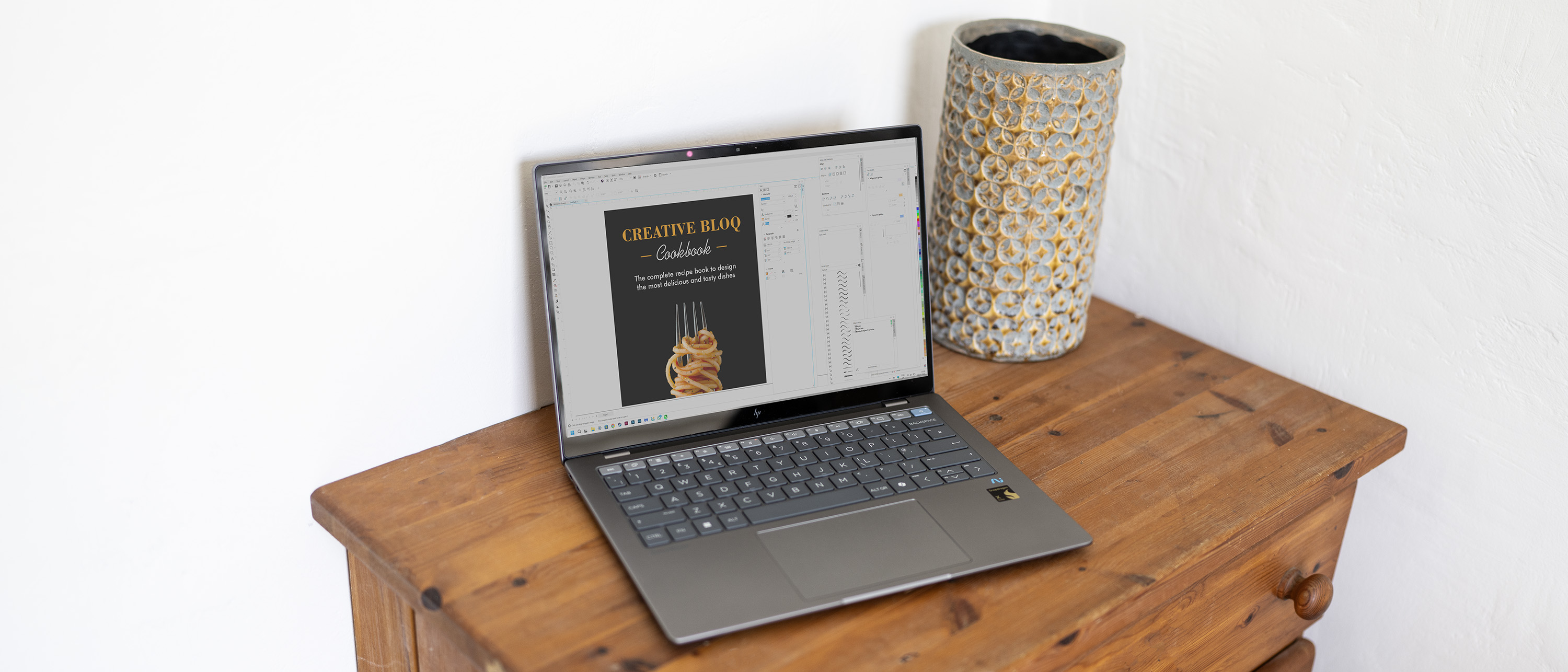Game art tips: how to breathe new life into a classic character design
How Plarium drew inspiration from Alice's Adventures in Wonderland for RAID: Shadow Legends.

Designing unique characters is one of the most critical and challenging components in game design. This is especially true when the characters are well-known figures in literature, television and film. Not only are you striving to create something special in its own right, but must also strike the right balance between familiarity and reinvention, allowing the character to break free from preconceived notions while still being instantly recognisable.
This was the challenge we faced at Plarium when designing characters for RAID: Shadow Legends x Alice’s Adventure, our 3-month special event based on Lewis Carroll’s book, Alice’s Adventures in Wonderland. RAID: Shadow Legends is a dark fantasy squad-based RPG, where the characters (or Champions as we call them) are quite literally the focus of the game, so it was important that we captured that aesthetic while being true to the source material. Here is how we handled the situation to help other character designers work through similar situations.
Below I go through the steps we take to design a character for RAID: Shadow Legends x Alice’s Adventure. If you want to get into game art read up on the best digital art software, as well as the best drawing tablets. And, of course, take a look at our game RAID: Shadow Legends x Alice’s Adventure.
01. Define your core concept
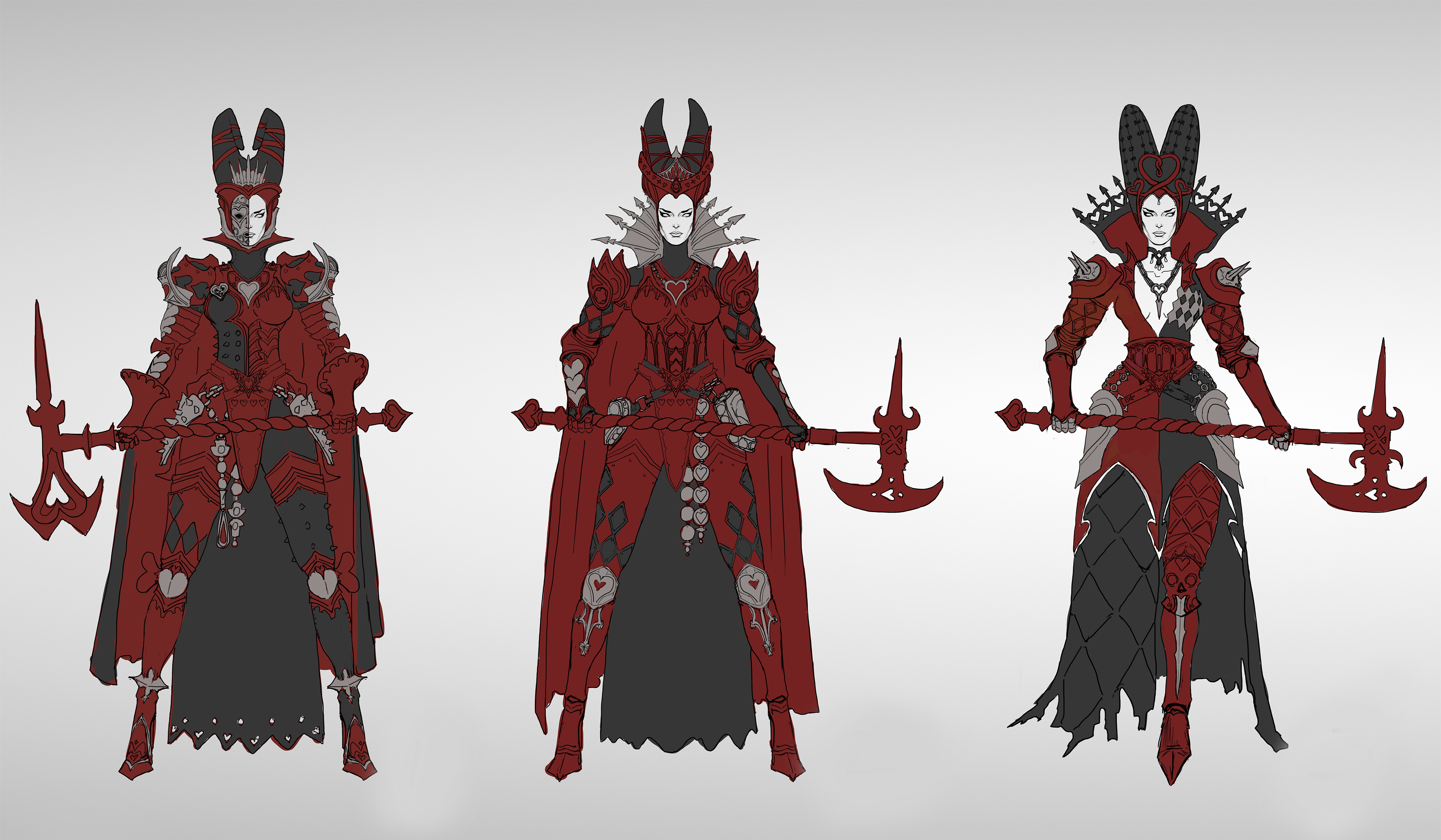
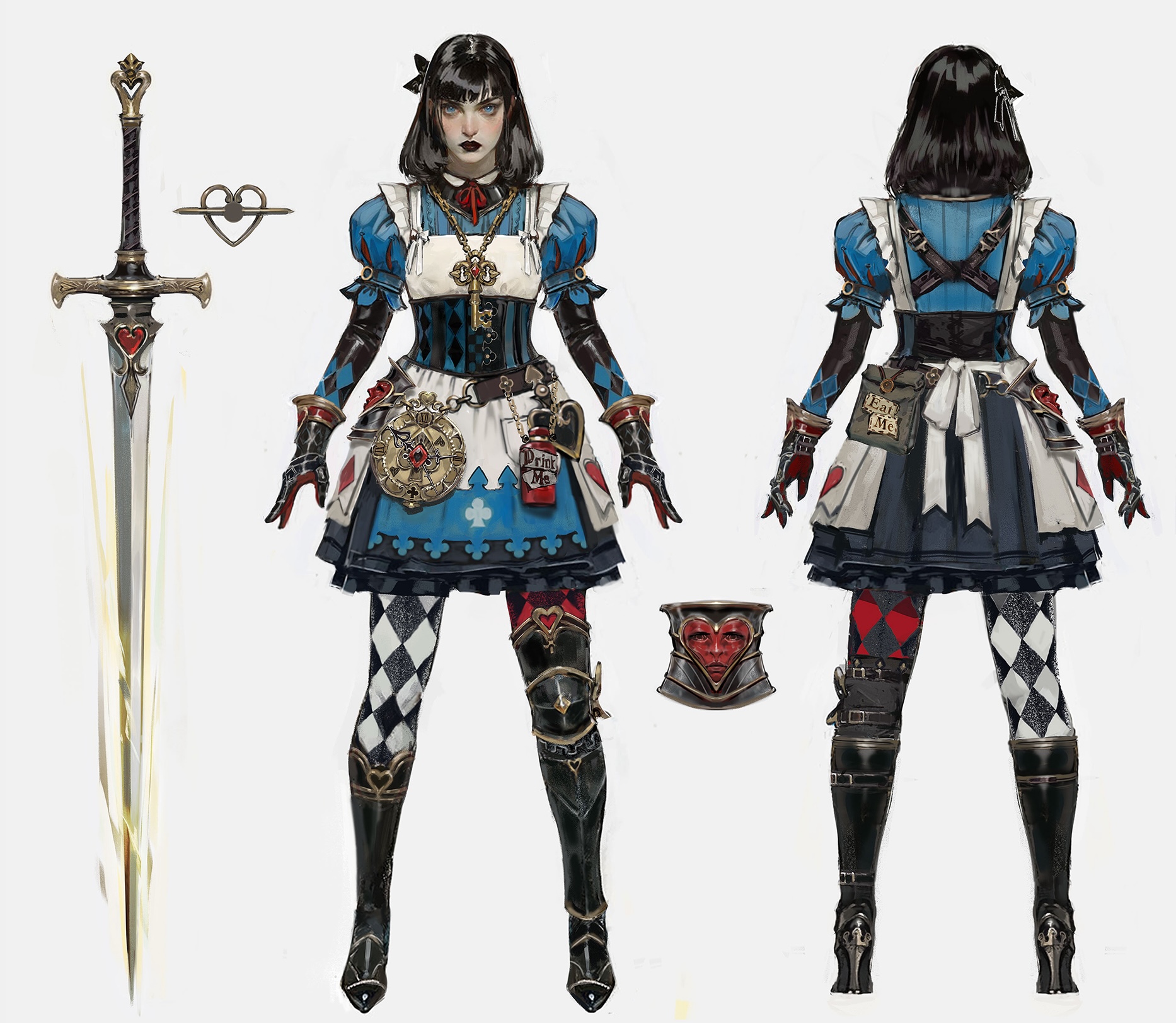
When reimagining a classic character, a designer should begin carefully researching the source material and define the character’s core role and thematic identity within their own property. It’s important to hone in on the keys to retaining that familiarity besides just the name. In the case of Alice the Wanderer, we determined it was her youthful, delicate hairstyle, the knee-length, puff-sleeved dress that made people instantly identify with the character.
Alice in RAID: Shadow Legends is a warrior, so the contrast of the perfectly coifed hair and a ruggedised version of the dress paired with weaponry created a unique eye-catching dynamic. Fitting her into RAID’s universe required a major adjustment, as her gear design incorporated both the game’s aesthetics and symbols from a deck of cards.
But it’s different for every character. With the Queen of Hearts, for example, the process posed a different set of challenges than Alice the Wanderer. The Queen required us to preserve her existing demeanor, which was more of a natural fit to the RAID: Shadow Legends universe, while still reimagining her appearance. Whereas Alice’s familiarity was rooted in her appearance, the Queen of Hearts’ familiarity is her domineering personality.
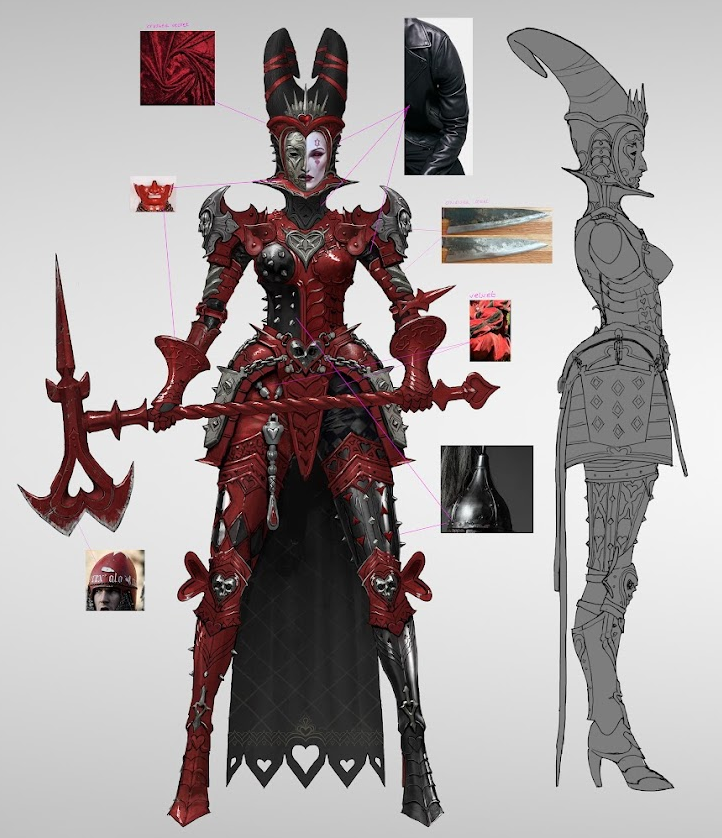
Before putting pen to paper, we began the creative process by determining where the characters fit within RAID’s many Factions, which is how we organise our 800+ Champions based on their demeanour, skill sets, and overall style. We then develop visual language through research, silhouette blocking, and material detailing, ensuring that each element reinforces their transformation into RAID Champions. In Alice’s case, this meant finding contrast between her original innocence and her battle-hardened redesign.
For the Queen of Hearts, it meant amplifying her existing dominance and making her an undeniable force on the battlefield. It is also important for character designers to remember they aren’t just making a unique character for the fans of the source material, but fans of their own property as well. We avoided common attire from RAID’s other queen-like champions such as dresses, skirts and traditional noble garb for this reason.
02. Outside Research, References, and Mood Boards
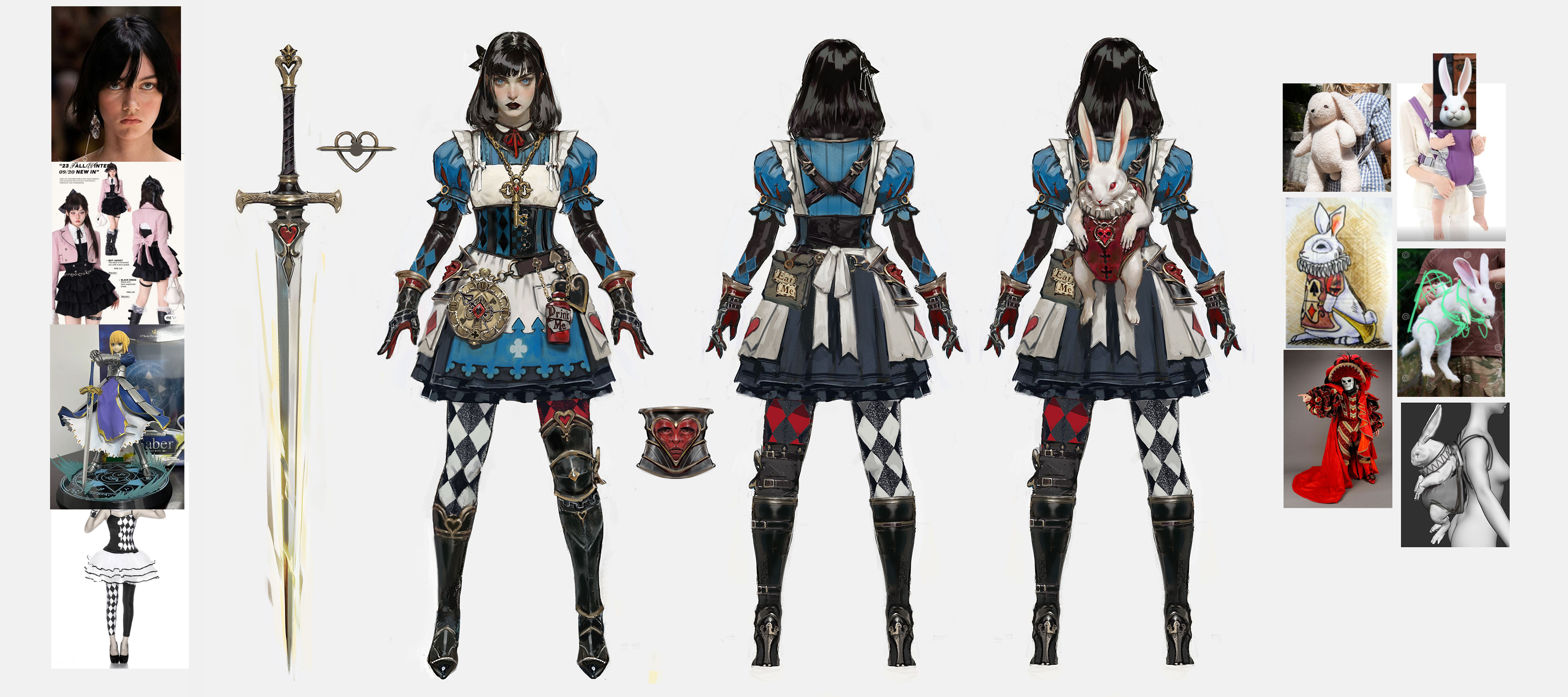
Once we had the thematic direction, we gathered references to build a strong visual identity. For the Queen of Hearts, we looked at historical armoured queens and warrior rulers, but also at chess pieces, gothic knights, and iron maidens to reinforce her symbolic power as a leader. Since she was to be placed in RAID’s Knights Revenant Faction, we re-examined our own characters in this Faction to ensure alignment.
But character design for games isn’t just about the look, it’s about posture as well. One of the most important steps we did in the early stages for the Queen of Hearts was defining her silhouette to ensure she immediately appears powerful, intimidating and commanding at first glance.
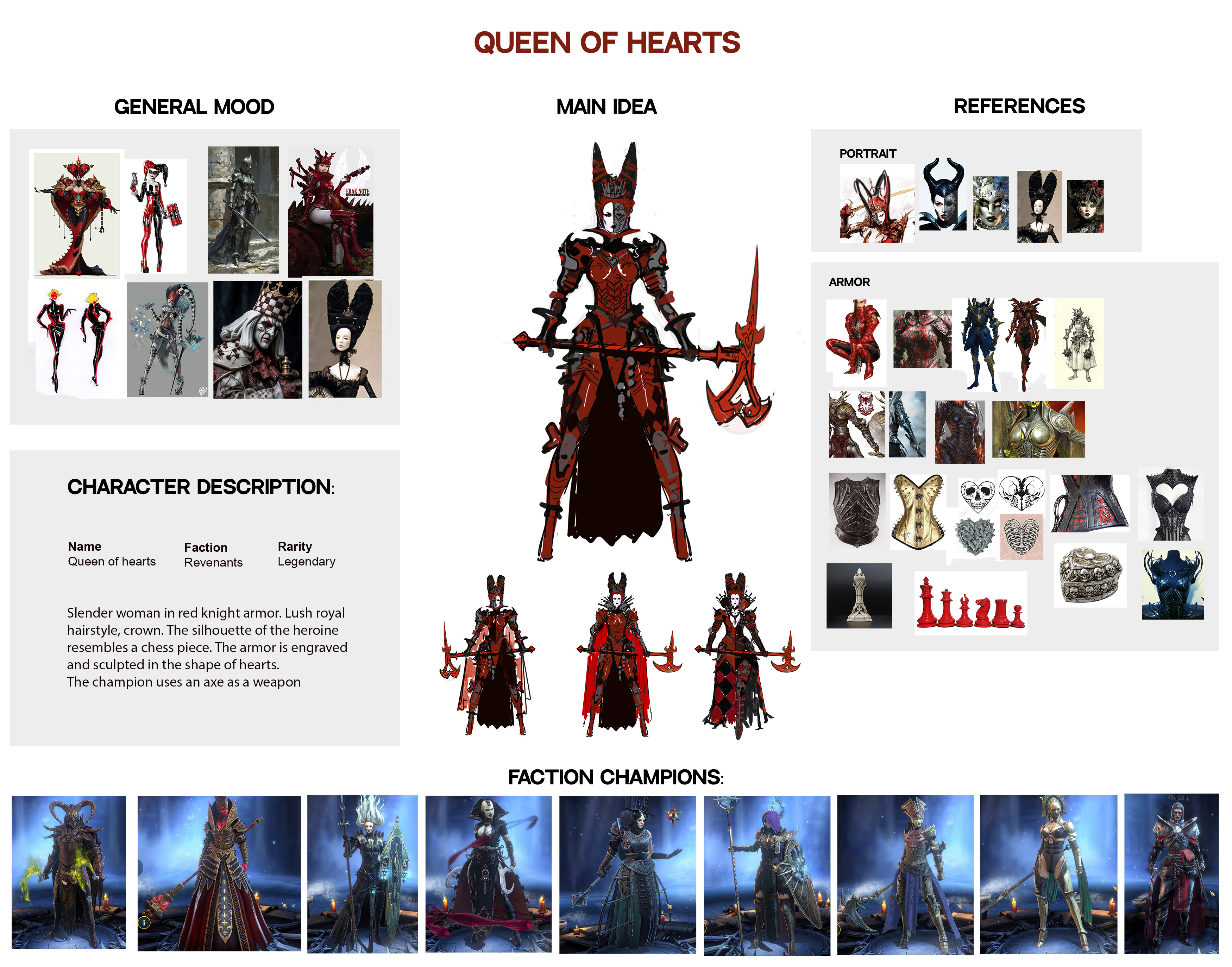
Designers must pay close attention to silhouette clarity – it should never feel blurry or shapeless, but maintain strong, readable forms, even before refining details. A well-defined shape ensures that the character remains distinct even in fast-paced action sequences. Additionally, analyse how details and colours interact to guide the player’s focus – strategic accents and contrast can direct the eye to key elements of the hero’s design.
We experimented with exaggerated, sharp armour shapes that gave the Queen a chess-like rigidity, reinforcing her strategic dominance. Her shoulder plates were designed like a spiked chess queen, making her loom over opponents, emphasising authority and danger. The massive battle-axe became a focal point, replacing the symbolic "Off with their heads!" decree with something far more visceral. She doesn’t just demand executions; she delivers them herself.
03. Make sure a character’s face tells a story
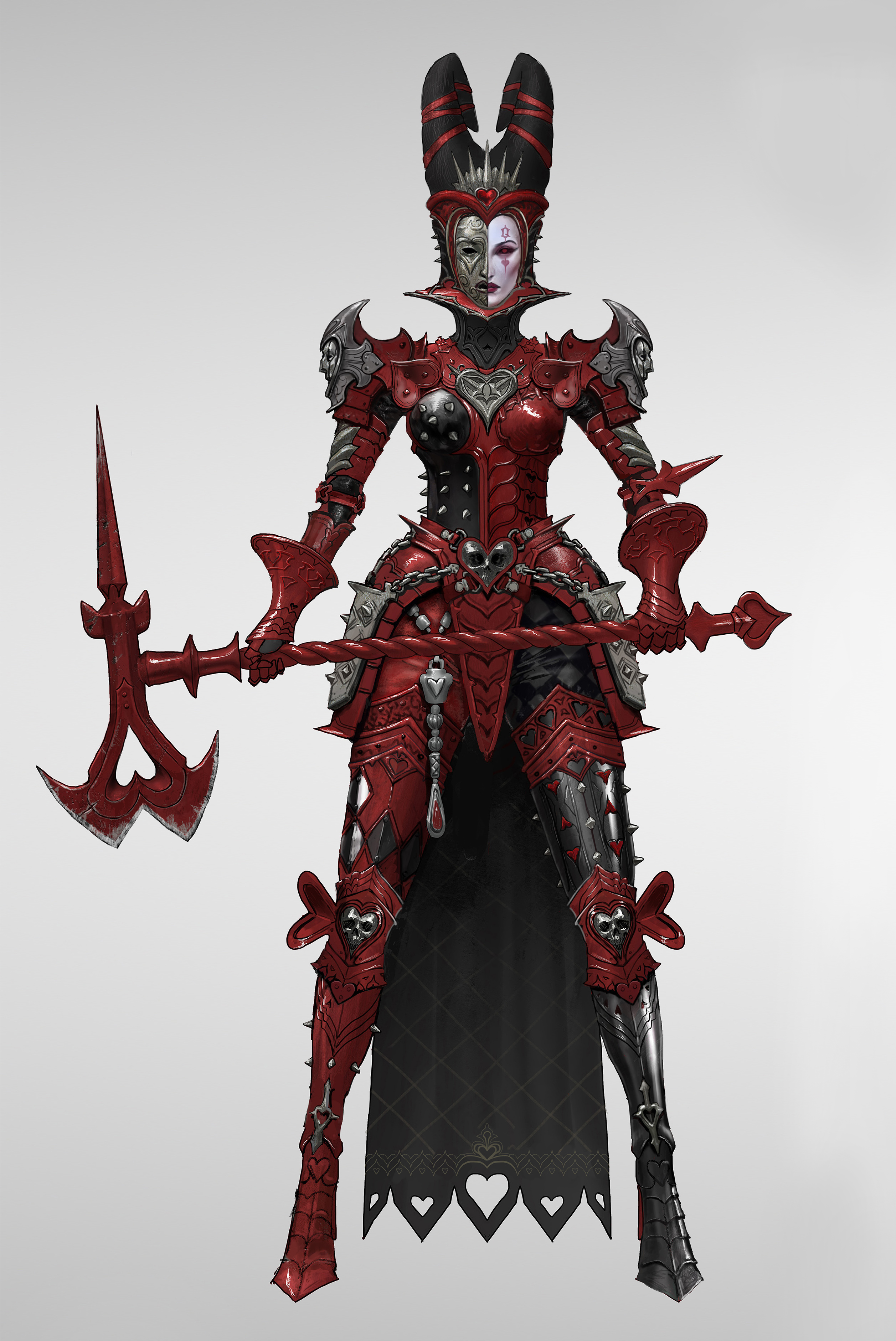
I always say a character's face should tell a story without any narrative, and with the Queen of Hearts, we wanted her expression to radiate control, fury, and an unwavering demand for obedience. We gave her a fierce gaze, as if sizing up a victim. On one side of her face, there’s an emptiness in her facial armour, reinforcing her emotionless, ruthless presence. On the other side, she glares with a striking red eye evoking deadly confidence, as if she’s already decided your fate before you’ve even drawn your weapon.
When trying to maintain recognition of a classic character, always focus on silhouette, key features, and signature accessories that serve as visual anchors. However, don’t just replicate – use design choices to reinforce the transformation. Posture, facial expressions, and material choices should reflect the new role and personality while still nodding to the character’s origins.
04. Detailing and refinement
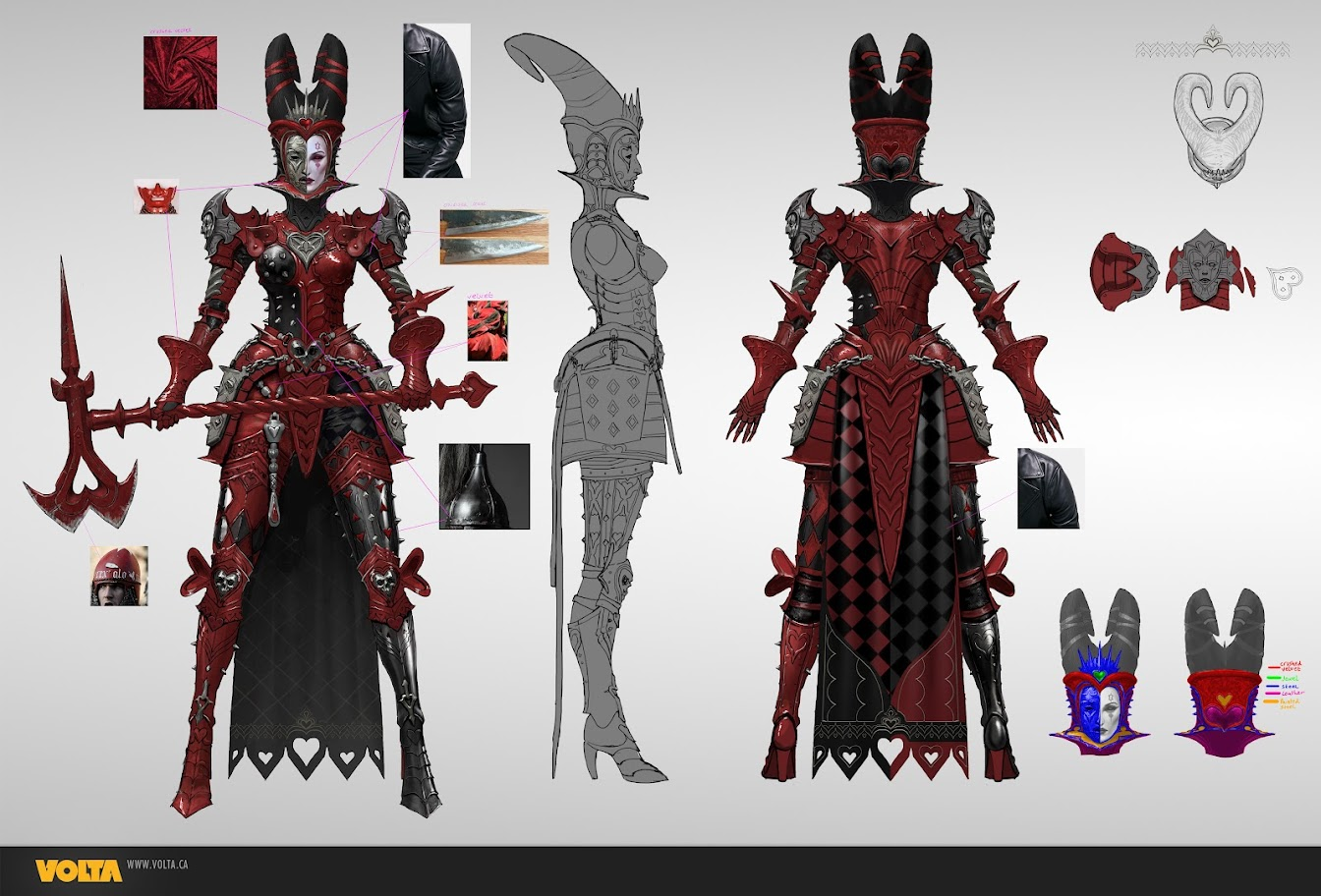
Once the silhouette and expressions were locked in for the Queen of Hearts, we refined her armour and materials to enhance her storytelling through design. Her armour was given deep red accents, a direct nod to her royal power and blood-soaked battlefield history. The iron-plated textures evoke the feeling of a warlord rather than just a ruler, reinforcing the idea that she fights for control and doesn’t just rule from a throne. The engravings on her armour tell a subtle story, inspired by medieval executioner motifs, linking her visual presence to her brutal, no-mercy rule.
Telling a story through textures, wear, and detailing can really bring depth to a character. Scratched armour, flowing capes, or intricate engravings can convey history, power, and transformation. A successful redesign should feel both fresh and familiar, allowing the audience to recognise the character instantly while experiencing them in a whole new way.
05. Testing and adjustments
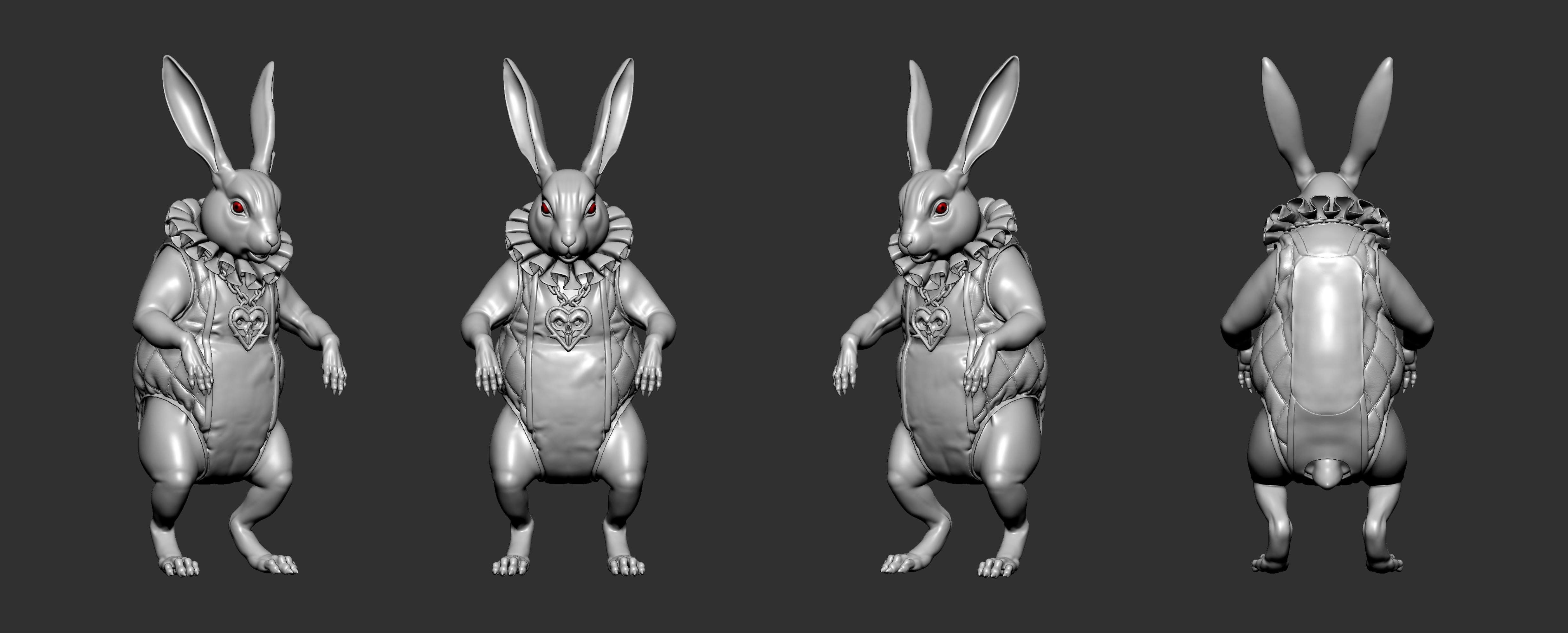
Once the core model for the Queen of Hearts was developed, we tested it in RAID’s environments to ensure she stood out while feeling grounded in the game world. Initially, we placed her in the Knights Revenant showcase scene to see how her lighting and materials reacted.
We also tested her in battle environments to verify that her imposing stature and armour details remained visually striking from different camera angles. Adjustments were made to contrast her against other characters, making sure her silhouette remained distinct, even in chaotic battles.
Beyond visuals, technical considerations are important in bringing a character to life. The animation rig, skeletal structure, and motion dynamics should reinforce the narrative and gameplay identity. For example, when designing Alice the Wanderer, we recognised that she always follows the White Rabbit, so we integrated the rabbit into her concept art. This led to the decision to create an additional animation skeleton, enhancing her storytelling through movement and making her stand out from other RAID Champions.
Inspired to design your own video game character? Then also read up on the best laptops for drawing and digital art as well as draw inspiration from our list of the best digital art.

Thank you for reading 5 articles this month* Join now for unlimited access
Enjoy your first month for just £1 / $1 / €1
*Read 5 free articles per month without a subscription

Join now for unlimited access
Try first month for just £1 / $1 / €1
Get the Creative Bloq Newsletter
Daily design news, reviews, how-tos and more, as picked by the editors.

Valentin Demchenko is an artist and art director working in the video games industry. Currently working on video game studio Plarium, Valentin has been working in CG art since 2011 and before this worked as a graphic designer.
You must confirm your public display name before commenting
Please logout and then login again, you will then be prompted to enter your display name.
